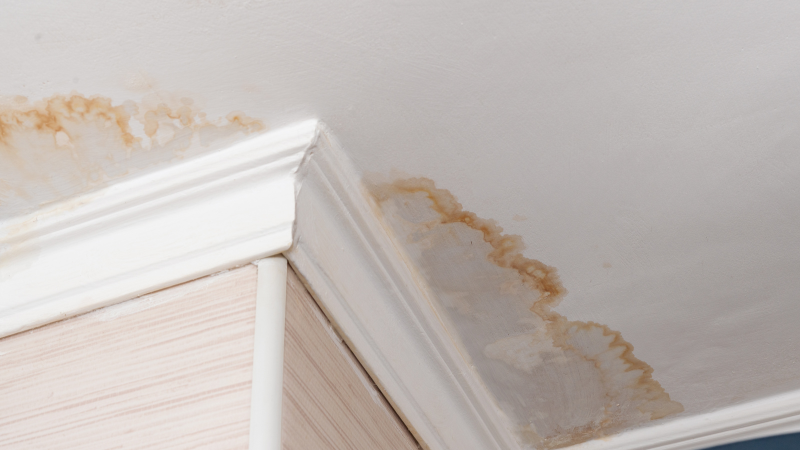Looking for Indications of Water Damage in the Bathroom
Looking for Indications of Water Damage in the Bathroom
Blog Article
This post following next pertaining to How to Fix a Water Damage Bathroom is relatively insightful. Have a go and make your own personal final thoughts.

The bathroom is extremely vulnerable for wet accumulation and potential water damages as a result of the constant use water in it. This post uses easy evaluation techniques to help detecting water damages threats.
The constant use of water in the restroom makes it exceptionally at risk for wet build-up and potential water damages. By checking it frequently, you can reduce water relevant problems.
The complying with set of examinations is easy to do as well as should be done when in every three months in order to maintain your restroom in good shape as well as to prevent possible water damages brought on by the tub, the shower, pipe joints as well as plumbing, sinks, cabinets, and also the bathroom
Do not overlook performing these examinations as well as be thorough while executing them. Bear in mind that these simple examinations can save you a lot of cash by giving early indications for water damages
Sinks and Cabinets
Sinks and also cupboards are revealed to wetness and moisture daily and also are typically forgotten. Examine frequently under the sink and on the kitchen counter above it. Fix any type of drip in the trap as it might suggest drain issues. Take a look around the sink, slow-moving draining pipes may show a blocked drainpipe. Replace sink seals if they are cracked or loosened.
Bathtub and also Shower
The shower as well as bath tub need special interest and upkeep. Check the tiles and also replace if fractured. Make certain that there is no missing cement in between the ceramic tiles. Inspect as well as replace split caulking at joints where the wall surfaces satisfy the flooring or the tub. Obstructed drains and also pipes troubles will stop the bathtub from drying out and also may indicate severe troubles below the bath tub. Speak with a specialist right away to prevent architectural damage. Focus on discolorations or soft locations around the bathtub walls as they might suggest an inner leak.
Plumbing
Signs for water damages are hard to identify because the majority of pipes are mounted inside the walls.
Pay unique attention to flooring and also walls dampness and spots as they might indicate an unseen plumbing problem. Inspect dampness levels in adjacent rooms also.
The Commode
The toilet is a prone water joint. Check the water lines as well as look for leaks around the bathroom seat, in the tube, and under the water storage tank. If you identify any indications of dampness on the floor around the bathroom, look for leakages in the toilet rim as well as container seals.
Know that hanging commode bowl deodorants boosts the opportunities for blockages.
TIPS TO PREVENT WATER DAMAGE IN THE BATHROOM
The average household uses approximately 80-100 gallons of water per person per day. For a family of 4, that's almost 2,500 gallons of water a week! The largest portion of this consumption comes from bathroom use. Flushing the toilet uses the most water, followed by taking a shower or bath. With that much water running through the home, water damage in the bathroom is bound to happen. Knowing how to spot signs of a water leak is essential to preventing long-term damage. This guide provides you with tips to reduce the impact of water damage on your bathroom.
CAUSES OF BATHROOM WATER DAMAGE
Pipe breaks are the most common cause of water damage we see in our daily jobs. The age of a pipe plays a large role in a pipe break as well as corrosion. Over time, the metal begins to break down, allowing water to escape. Frozen pipe breaks are also a concern in the winter months. Toilet overflows caused by paper products or children flushing inappropriate items. Degraded caulking around the toilet or bathtub can allow water seepage, sometimes behind the fixture, into the subfloor or walls. Condensation forms when the water in a pipe is cooler than the air temperature. Beads of water form on the exterior of the pipes, sometimes so much so that the water begins to drip and pool below. Sink or shower backups created by poor drainage. HOW TO PREVENT WATER DAMAGE IN YOUR BATHROOM
Inspect your toilet supply line for worn or frayed hoses and replace them as needed. Winterize your plumbing to prevent a frozen pipe break. Use vent fans to prevent condensation that can lead to mold growth. Routinely check and replace degraded caulking around your toilet or bathtub. Increase the temperature in your toilet tank and insulate your pipes during the warm summer months to keep condensation from forming. Use child safety locks on the toilets. Flush only toilet paper. "Flushable" wet wipes are actually not good for your plumbing system. Additionally, feminine hygiene products should not be flushed. Prevent water from escaping the tub or shower. Make sure shower curtains are in good condition. Inspect shower doors and replace the seal strip if necessary. Wipe up any water that accumulates on the floor and use bath mats. Water left to sit can cause damage to the tiles and flooring. Refrain from using bath products containing heavy oils to avoid a clogged drain.

Do you really like reading about How to Prevent Bathroom Water Damage? Make feedback down the page. We'd be delighted to listen to your opinions about this entry. We hope to see you back again soon. Sharing is caring. Helping others is fun. We take joy in reading our article about Common Causes of Water Damage in a Bathroom.
Schedule Service Pickup Report this page